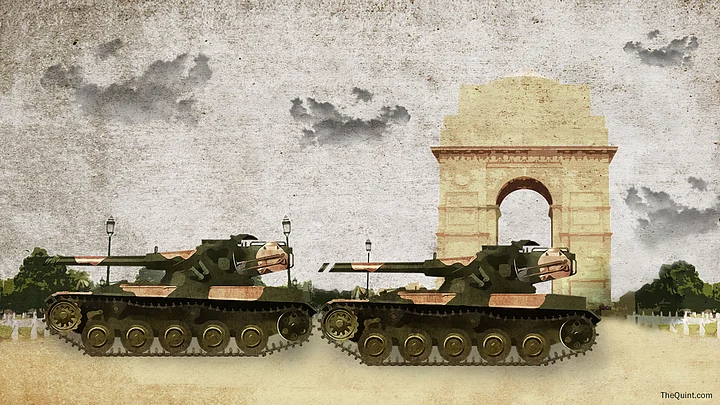As stills of Turkish soldiers patrolling the streets of Ankara and Istanbul burst onto our television screens along with the news that an attempted coup d’etat has faltered, two events in South Asia from the 1970s came to mind – the capture of power by the Pakistani army under General Zia-ul-Haq who deposed the elected prime minister Zulfikar Ali Bhutto, and the clique of colonels in Bangladesh who killed the country’s founding father Sheikh Mujibur Rahman before installing the puppet regime of Khondakar Mushtaque Ahmed, who was said to have the tacit backing of the United States.
Military putsches have not just been confined to South Asia. Instances of bloody coups were the norm rather than the exception in several African and South American countries in the 1960s and 70s when these countries were the playground for superpower rivalry. And in each of these cases of violent overthrow of the elected political or military regimes a basic point is asserted again and again: governmental institutions and leadership in those systems subject to domestic military intervention are weak or impotent, and therefore, vulnerable to interference from men in uniform.
India’s First Coup D’Etat
India’s western and eastern neighbours have had a tumultuous and bloody history of coups and counter-coups. And yet India, since its independence, has never witnessed even a serious attempt at a military takeover of its democratic institutions partly bequeathed to its political leaders by the departing British and partly the result of a wonderful – and successful – experiment in democratic governance of the 1950s. But why?
At the risk of inviting the wrath of historians, I would argue that the 1857 mutiny/uprising of sepoys of the Bengal Native Infantry across many provinces in British India was the first proto coup d’etat against the established order. From the first shots fired by the sepoys in Meerut on May 10, 1857, followed by the rash of killing of senior officers, it took over a year for the British colonial authorities to put down the subaltern coup and capture and hang its hesitant and disorganised leaders. Remember, the flames were lit and the first British blood was spilled in Meerut’s cantonment. From there the contagion spread to other cantonments across central and northern India.
Lessons from the 1857 Uprising
Less than a hundred years after 1857, when the British colonialists finally departed, the enormous task of rebuilding a nation and institutions lay with the Congress government under Jawaharlal Nehru. The lessons of 1857 were not lost on the political leadership. It quickly moved to defang the military, especially the army.
The most ingenious means adopted was to not give clear representation to one or two ethnic groups but to broaden the pool among many ethnic groups. Punjab’s share of soldiers (recall that Sikh soldiers, besides the Tilangas or those from Andhra Pradesh, were used heavily to quell the 1857 rebellion of the Bengal Native Infantry (BNI) regiments which were drawn mainly from eastern UP and Bihar) in the fledgling army fell from 60 percent at the beginning of the Second World War to 32 percent by 1948.
Several new regiments, with the soldiers drawn from different states, were established in an attempt to make the armed forces proportionally representative and hence, not susceptible to solidarity among troops belonging to one or two ethnic groups. This architecture of the army insulated it from pressures of ethnocentrism or casteism.
Checks and Balances
The logic was to create diversity and not maintain homogeneity which, as in the case of Pakistan and Bangladesh, was among the root causes of military coups in the two countries. In Pakistan, since its creation, the Punjabis continue to be masters of the army, the single-most important and powerful armed forces’ institution – and often also the chief mischief-makers. As Donald Horowitz rightly points out, armies with a high sense of cohesion are more likely to intervene in politics than those not so configured.
A second important step – and it survives in a healthy form even to this day – was to make the military subordinate to the civilian authority which was empowered to take decisions even during war time. In line with this measure, the office of the commander-in-chief was abolished and power, howsoever minimal, was equally distributed among the chiefs of the army, air force and the navy. This, in effect, institutionalised the concept of not just separation of powers but of checks and balances.
Institutionalising Internal Divisions
Over time, and primarily because of expediency arising out of the India-China war of 1962, a number of paramilitary forces (BSF, SSB) were established to guard the borders, which till that point of time, was the sole preserve of the army. The central paramilitary forces also attracted employment among all ethnic categories in India, besides being a check on the perceived supremacy of the army.
So the next time you watch a Republic Day parade thank India’s early constitutionalists for what Steven Wilkinson, a scholar of the Indian army and the political leadership, calls their “compositional strategies”.
Institutionalising internal divisions, creating a civilian-controlled military, making the paramilitary forces responsible for handling internal security and establishing a civilian agency for intelligence gathering have certainly characterised India’s success story in preventing coups.
Former army chief General (retd) V K Singh, now a minister in the Narendra Modi government, should know better.
Also read:
The Attempted Coup in Turkey, Through Amateur Videos
Fethullah Gulen, the Cleric Being Accused of Turkey’s Failed Coup
